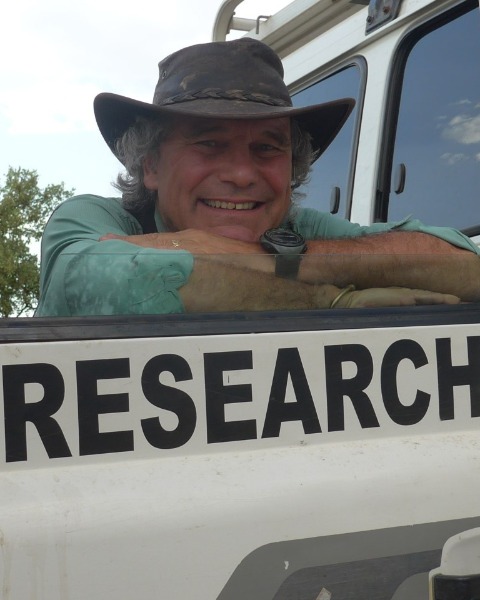Back
Symposium
Session: Zoonoses and the Agricultural Matrix: Integration and Synthesis for Landscape Immunity
SYMP 20-2 - Four quarters! Or no quarter for Biodiversity? Simple quantitative insights into balancing land for agriculture, biodiversity and water
Thursday, August 18, 2022
1:50 PM – 2:10 PM EDT
Location: 524A

Andy P. Dobson
Professor
Princeton University
Princeton, New Jersey, United States
Presenting Author(s)
Background/Question/Methods
Land use change is the largest threat to biodiversity. Most land use change is driven by the need for land to feed the world's human population and the livestock that are a major source of protein in the human diet. Strong arguments have been made that 50% of land needs to be set aside to conserve biodiversity. But at least this area of land is needed to feed a growing human population of 7 to 8 billion people! Furthermore, land needs to be set aside to provide catchment areas for the water that is needed by both agriculture and manufacturing industries. Are there any ways to resolve this dilemma?
I will develop a set of statistical analysis and graphical mathematical models that divide global land-use into four categories: (1) pristine wilderness; (2) mixed use human and low intensity agriculture; (3) intensive industrail agriculture, and (4) cities and manufacturing. I will then examine ways of dividing available land between these four land use types in ways that will balance food production and conservation of biodiversity.
Crucially we need to consider rates of pathogen transmission within and between areas with different patterns of land use. I will discuss ways to do this.
Results/Conclusions
The principle results of this analysis suggest we create a political argument to divided global land use into four quarters. A quarter should be set aside as wilderness, largely in mountain areas with surrounding forests and savannas. The principle ecosystem service of this land is to capture, store and provide clean water for the other three-quarters where humans live at increasing population densities. The low intensity agriculture of the second quarter should provide habitats for a large number of species that can coexist with relatively low levels of human activity and exploitation. Crucially, these areas need to supply vital habitat for pollinators for the low levels of agriculture in this quarter, while alsodispersing out to pollinate crops in more intensively farmed agriculture in the third quarter. The crops and livestock in the intensive quarter will be highly dependent upon the water provided by the wilderness quarter. Clean potable water will also be vital in the quarter with the highest human population density, these will mainly be coastal areas that need to be surrounded by marshlands to help cleanse pollution generated by human and industrial activities. While not perfect, this approach will set aside 50% of land for biodiversity.
Land use change is the largest threat to biodiversity. Most land use change is driven by the need for land to feed the world's human population and the livestock that are a major source of protein in the human diet. Strong arguments have been made that 50% of land needs to be set aside to conserve biodiversity. But at least this area of land is needed to feed a growing human population of 7 to 8 billion people! Furthermore, land needs to be set aside to provide catchment areas for the water that is needed by both agriculture and manufacturing industries. Are there any ways to resolve this dilemma?
I will develop a set of statistical analysis and graphical mathematical models that divide global land-use into four categories: (1) pristine wilderness; (2) mixed use human and low intensity agriculture; (3) intensive industrail agriculture, and (4) cities and manufacturing. I will then examine ways of dividing available land between these four land use types in ways that will balance food production and conservation of biodiversity.
Crucially we need to consider rates of pathogen transmission within and between areas with different patterns of land use. I will discuss ways to do this.
Results/Conclusions
The principle results of this analysis suggest we create a political argument to divided global land use into four quarters. A quarter should be set aside as wilderness, largely in mountain areas with surrounding forests and savannas. The principle ecosystem service of this land is to capture, store and provide clean water for the other three-quarters where humans live at increasing population densities. The low intensity agriculture of the second quarter should provide habitats for a large number of species that can coexist with relatively low levels of human activity and exploitation. Crucially, these areas need to supply vital habitat for pollinators for the low levels of agriculture in this quarter, while alsodispersing out to pollinate crops in more intensively farmed agriculture in the third quarter. The crops and livestock in the intensive quarter will be highly dependent upon the water provided by the wilderness quarter. Clean potable water will also be vital in the quarter with the highest human population density, these will mainly be coastal areas that need to be surrounded by marshlands to help cleanse pollution generated by human and industrial activities. While not perfect, this approach will set aside 50% of land for biodiversity.
